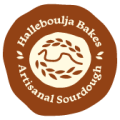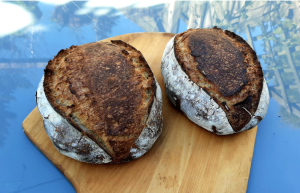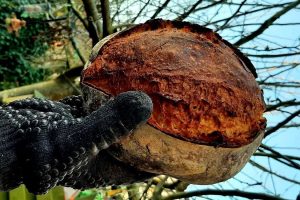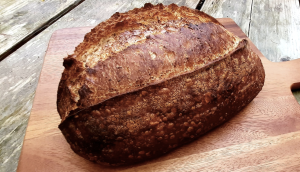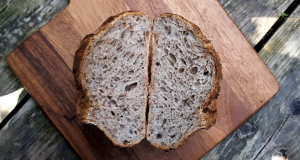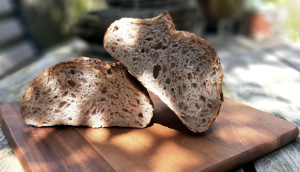Platano Sourdough
Platano Sourdough is a rustic loaf from New World Sourdough. Is that a hefty unripe banana, you say? Looks like banana but does not taste, feel, cook, and this is the rough part, peel like a banana. Not-at-all It took a bit of elbow grease to remove the skin from the fruit. Platano or plantain is the less sweet, tougher, more starchy cousin of the banana–both belonging to the Musaceae family of banana plants.
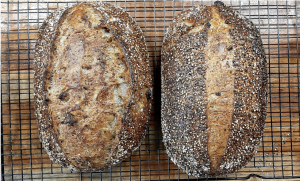

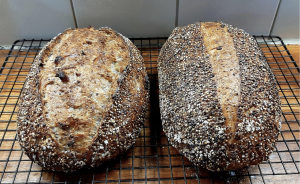
Unripe plantains are green to yellow–and I repeat, difficult to peel!– and the fruit is hard, dry and starchy. Fully ripe, plantains are black and some people liken its flavor that of a banana but less sweet.
Plantains are technically fruit but regardless of the color and stage of ripeness they cannot be eaten raw.
Plantains are a staple in Central and South American, Caribbean, African, and Southeast Asian cuisines.
Dough Specs:
– 70% bread flour — Diamant 13% protein
– 30% whole wheat–de Slaege red winter wheat
– 80% water( main dough)
– 20% levain
– 20% uncooked quinoa
– 2.5% honey
– 2% salt
– 1 large plantain
Notes:
– Taste: Super delicious bread with a perfect balance of sweet and savory. Great carrier for some aged Dutch cheese. Very nice crumb although tighter in the loaf with the sealed-up score. Lovely textures and crunch from the quinoa.
– Recipe: the unripe plantain required more water and cooking time than stated in the recipe. I probably should have used a ripe plantain. As the plantain was very dry and crumbly (even after cooking) it was hard to incorporate in the dough.
– The recipe omitted this but it’s important to rinse and soak the quinoa as it can impart an unpleasant bitterness.
– Not in the recipe, but I seeded the surface with leftover sprouted quinoa (they grew roots overnight )
– I noticed that New World Sourdough has quite a few errors and omissions. As always it’s important to read through a recipe very carefully beforehand. However, I really like the interesting and creative use of ingredients in the recipes.
If you made it through the entire text…. thanks for reading and have a crummy day.
– Stephania
